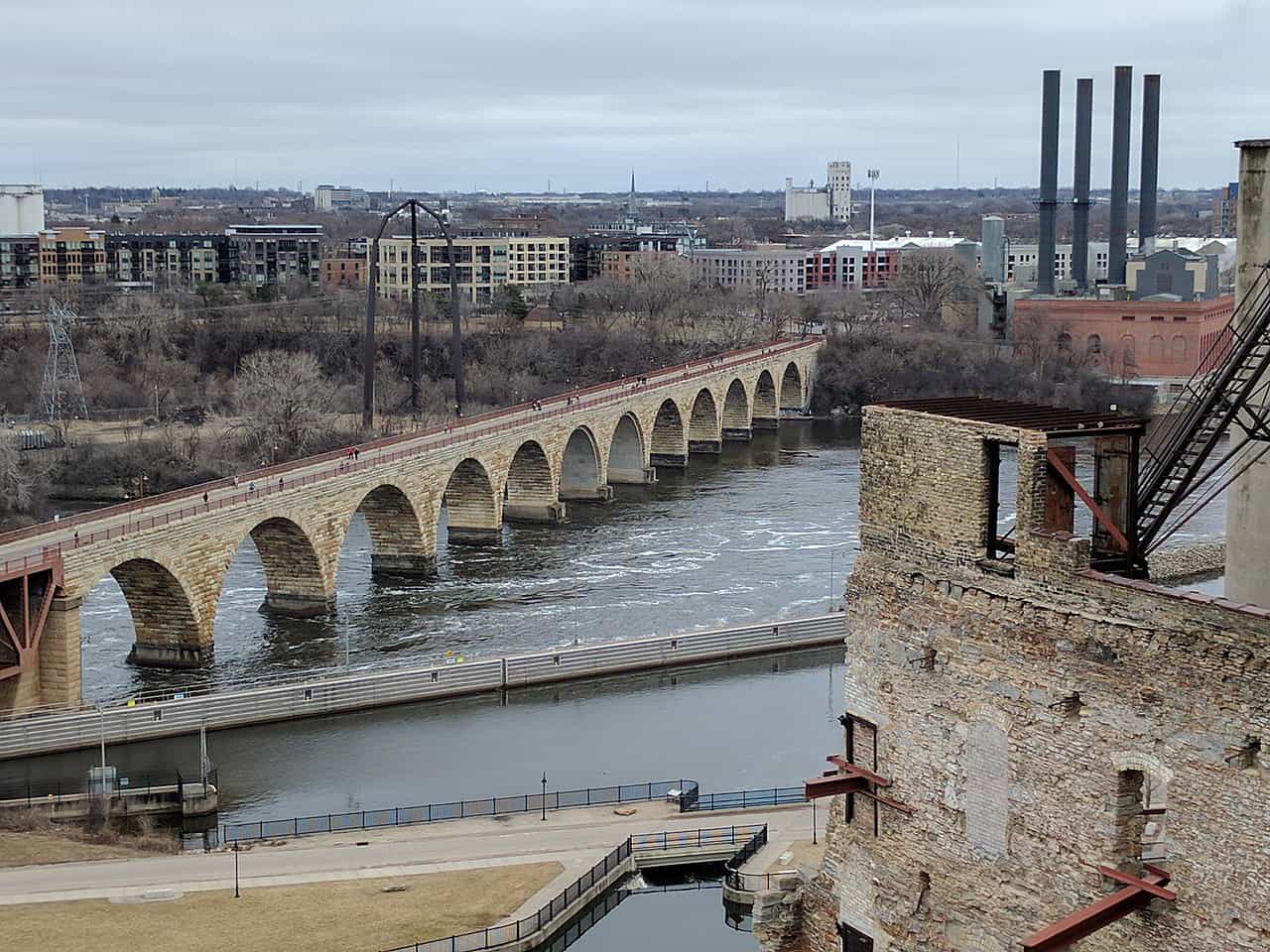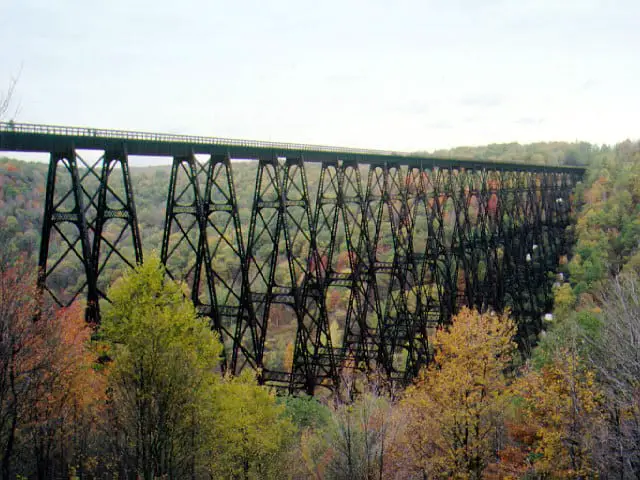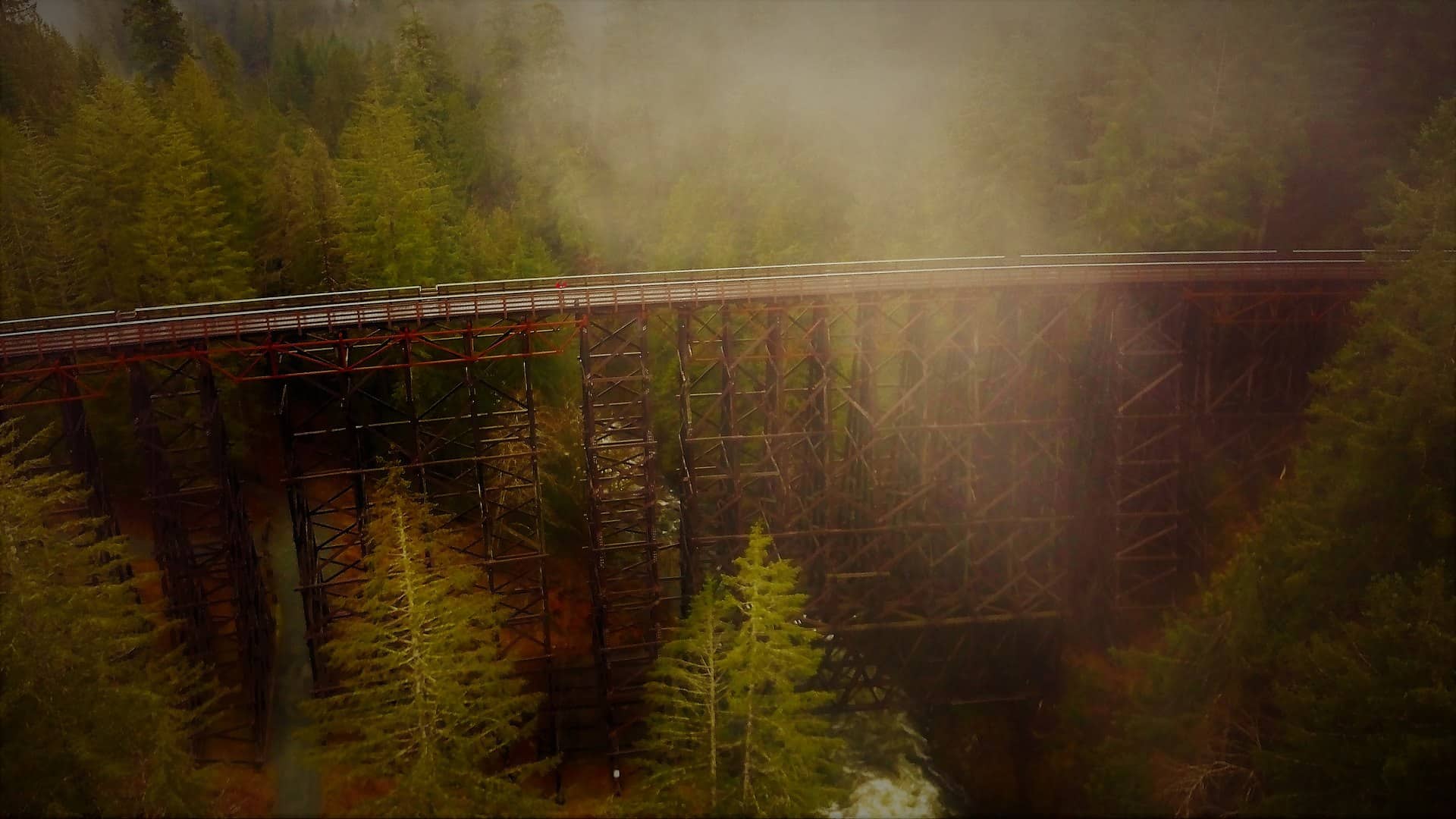Railroad Bridges – Steel, Stone and Wood – Types and History.
Railroad bridges are built with the goal of carrying the train and the load over an obstruction, which could be a river, canyon, highway or another bridge.
The railroad bridges have a long, rich history, dating back to the beginning of the railroad industry, which was the 19th century.
Many things have changed since 1820, the year in which the first modern railroad bridge was built. Back then, the steel,the iron knowledge and technology of building bridges was nonexistent. Most of the railroad bridges have been built using wood and stone, trestle bridge or arch stone.
Credit Wikipedia.com
Railway bridges construction require a deep understanding of structural engineering.
With the expansion of the railroad industry, the rails have started to spread across the country, reaching a peak of 254,000 miles of tracks by 1916, leading to a great need of railroad bridges.
Today there are about 10 types of railroad bridge designs, among them the most used are the beams, trusses, girders and spans. Most of the ones in use today are built out of use
steel, iron and concrete.
Let’s take a quick look at some of the most prominent ways of building the railroad bridges, starting in a chronological order.
Timber Trestle Railroad Bridge is built from a number of short spans supported by a rigid tripod looking frame, being extensively used in the 19th century for many of the railroad bridges built.
Some of the most notable trestle bridges built out of wood are Kinzua Bridge (collapsed in 2013), Kinsol trestle bridge ( up in Canada), Pouce Coupe Railway Bridge.
Stone Arch Railroad Bridge is built out of stone, in an arch looking shape. One of the most notable railroad bridges made out of stone is Stone Arch Bridge in Minneapolis, is the only arched bridge made of stone on the entire length of the Mississippi River, it cost over 17 million dollars in today’s money.
Stone bridges are built to last, they’re the most beautiful bridges as well, unfortunately they cost a lot to be built. As a consequence, once the steel manufacturing industry has begun, the railroad bridges began to be built out of steel, iron only, in some cases using concrete foundations.
Credit
Steel Industry and the Railroad Bridges
Steel industry has brought the railroad bridges to a new, upgraded level, due to its toughness, its cost, compared with stone manufacturing, bigger more impressive bridges started to be built.
Some of the most impressive steel railroad bridges are Hell Gate Bridge, Grand Junction Railroad Bridge, Beverly Bridge, Quebec Bridge, Genesee Arch Bridge, Cape Cod Canal Railroad Bridge and many more. Many of these bridges use a girder design.
As you can tell, the railroad bridges are a very important aspect in the daily life activity of the railroad industry. Without them we wouldn’t be able to transport passengers and freight as we do today, in fact the industry would freeze.
Local and federal and private funds are used daily for their maintenance, unfortunately because of their age, many are and will be disused.
Recommended
Cape Cod Canal Railroad Bridge – History, FactsApril 7, 2020Railroad Restaurants – Train, Railway ThemedApril 7, 2020Railroad Bridges in PennsylvaniaApril 4, 2020


